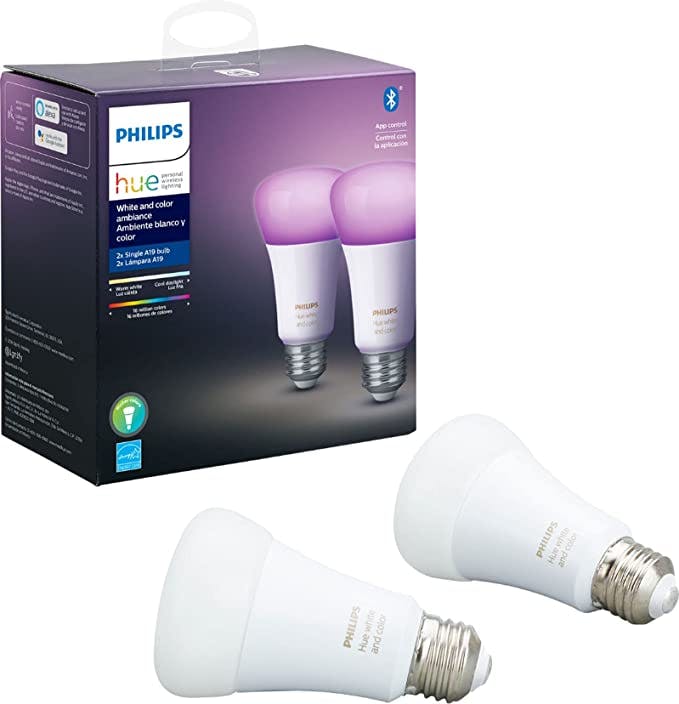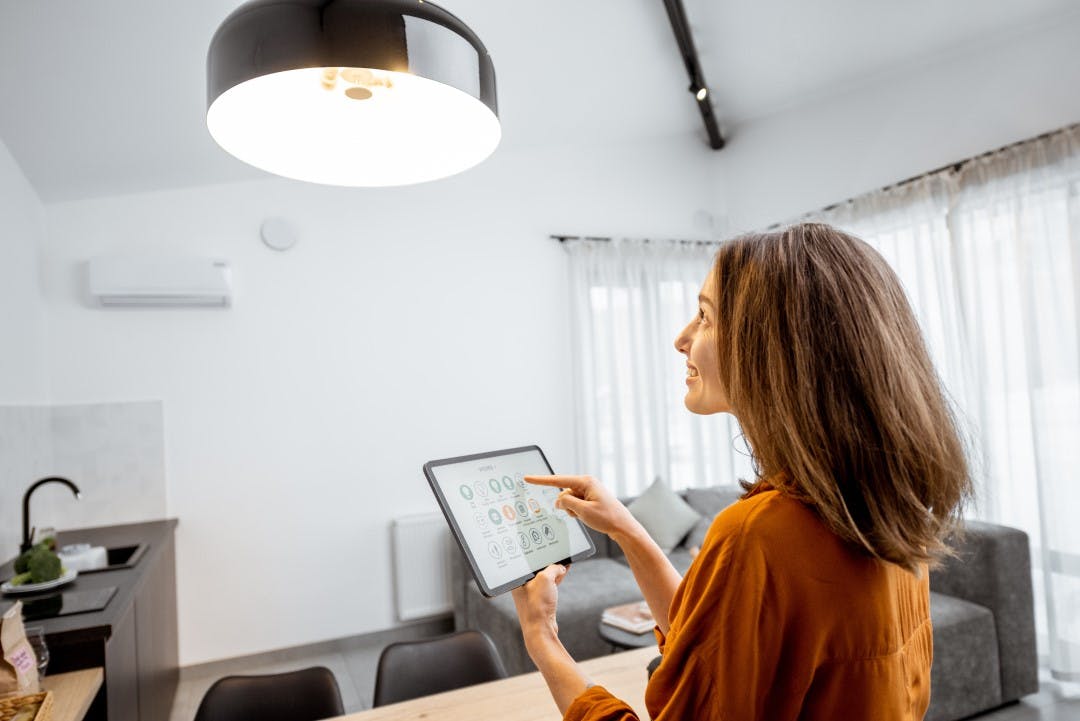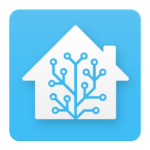Introduction
As a tech-savvy society, we are constantly seeking ways to improve our lives through innovation and automation.
In recent years, smart homes have emerged as the epitome of this pursuit, offering unparalleled convenience, efficiency, and customization.
One key aspect of smart home technology that has revolutionized our daily lives is lighting control.
Today, I’ll be your guide as we explore the advantages and real-life examples of smart home lighting control, demonstrating how it has the potential to transform everyday living.
Smart home lighting control not only brings us enhanced control over our environment but also elevates our experience in our homes.
As we journey through the fascinating world of smart lighting, you’ll discover how this technology can reduce energy consumption, provide personalized lighting solutions, and even boost your overall wellbeing.
So, get ready to step into the future of home automation and witness the life-changing impact of smart home lighting control.
The Basics of Smart Home Lighting Control
Before we delve into the numerous advantages of smart home lighting control, let’s first establish a solid understanding of what it entails and the different types of systems available.
This foundational knowledge will empower you to make informed decisions when it comes to choosing the right smart lighting solution for your home.
Definition and explanation of smart lighting control
Smart home lighting control refers to the integration of intelligent, interconnected devices that provide you with the ability to remotely manage and automate your home’s lighting.
This technology allows you to control not only when your lights turn on and off, but also their intensity, color, and even the direction of the light itself.
With a smart lighting system in place, you can tailor your lighting environment to suit your preferences, activities, and even your mood.
Different types of smart lighting systems
There is a wide variety of smart lighting systems on the market, each with its unique features and capabilities.
Here are three common types:
- Wi-Fi, Zigbee, and Z-Wave enabled devices: These systems rely on wireless communication protocols to connect your smart lighting devices to your home network, allowing you to control them through a smartphone app or a web-based interface.
- Voice-activated systems: These smart lighting solutions integrate with voice assistants like Amazon Alexa, Google Assistant, or Apple Siri, enabling you to control your lights using simple voice commands. This hands-free option adds an extra layer of convenience and accessibility to your smart home lighting experience.
- Integrated home automation systems: For those seeking a more comprehensive smart home solution, integrated systems combine lighting control with other home automation functions, such as climate control, security, and entertainment. These systems often use a centralized hub or control panel to manage all aspects of your smart home.
Key components of a smart lighting system
A typical smart lighting system consists of several essential components that work together to provide you with a seamless and personalized lighting experience:
- Smart bulbs: These energy-efficient LED bulbs connect to your smart lighting system, allowing you to remotely control their brightness, color, and on/off status.
- Smart switches and dimmers: These devices replace traditional light switches, providing you with the ability to control your existing light fixtures through your smart home system.
- Sensors and motion detectors: These components detect changes in your environment, such as occupancy or daylight levels, and automatically adjust your lighting accordingly.
- Mobile apps and smart home hubs: A user-friendly app or hub allows you to control and manage your smart lighting system, set schedules, create custom scenes, and monitor your energy usage from anywhere in the world.
Armed with this foundational knowledge, we can now delve deeper into the many advantages and real-life applications of smart home lighting control.
Advantages of Smart Home Lighting Control
Now that we’ve covered the basics of smart home lighting control, let’s dive into the numerous benefits it offers.
From energy efficiency to enhanced safety and improved ambiance, smart lighting systems provide a multitude of advantages that can truly transform your everyday living experience.
Energy efficiency and cost savings
One of the most compelling reasons to invest in smart home lighting control is the potential for significant energy savings and reduced utility bills.
Here’s how smart lighting systems can help you achieve this:
- LED bulbs and energy-efficient features: Smart lighting systems primarily use LED bulbs, which consume significantly less energy than traditional incandescent or CFL bulbs. Additionally, smart lighting features like automatic dimming and daylight harvesting can further reduce energy consumption.
- Automated scheduling and dimming: With smart lighting systems, you can create custom schedules that ensure your lights are only on when needed. You can also use dimming features to lower the intensity of your lights during periods of low occupancy, further reducing energy usage.
- Occupancy and daylight sensing: Smart lighting systems with occupancy and daylight sensors can automatically adjust your lighting based on the presence of people and natural light. This ensures that your lights are only on when necessary, minimizing energy waste.
Convenience and ease of use
Smart home lighting control systems provide unparalleled convenience and ease of use, simplifying your daily routine and making your life more efficient:
- Remote access and control: Control your lights from anywhere in the world using your smartphone, tablet, or computer. Whether you’re in bed or on vacation, you can easily manage your home’s lighting with just a few taps or clicks.
- Voice commands and integration with smart assistants: Voice-activated smart lighting systems allow you to control your lights using simple voice commands. This hands-free option adds a new level of convenience, making it easier to manage your home’s lighting while multitasking or when your hands are full.
- Personalized lighting scenes and presets: Create custom lighting scenes that cater to your preferences, activities, or mood. With the push of a button or a simple voice command, you can instantly transform your space to match your needs, whether it’s movie night, a romantic dinner, or focused work time.
Enhanced safety and security
Smart home lighting control systems can also play a crucial role in improving the safety and security of your home:
- Motion-triggered lighting: With motion sensors integrated into your smart lighting system, you can deter potential intruders by automatically illuminating dark areas when movement is detected.
- Vacation mode for simulated occupancy: While you’re away, smart lighting systems can create the illusion of occupancy by randomly turning lights on and off throughout your home, helping to deter potential burglars.
- Integration with security systems and smart locks: By connecting your smart lighting system with other home security devices, you can create a cohesive security ecosystem. For example, you can program your lights to flash red when your security system detects a breach or to automatically turn on when you unlock your smart lock.
Improved ambiance and wellbeing
Finally, smart home lighting control systems can significantly enhance your overall wellbeing and comfort by creating a personalized lighting environment tailored to your needs:
- Tunable white and color-changing bulbs: Smart LED bulbs with tunable white and color-changing capabilities allow you to adjust the color temperature and hue of your lights, creating the perfect ambiance for relaxation, focus, or entertainment.
- Customizable lighting for different activities and moods: Design custom lighting scenes for different activities and moods, such as warm, dimmed light for relaxation, or bright, cool light for productivity and focus.
- Circadian rhythm lighting for improved sleep and focus: Some smart lighting systems offer circadian rhythm features, which automatically adjust the color temperature
Real-World Examples
Now that we’ve explored the numerous advantages of smart home lighting control, let’s take a look at some real-world examples that demonstrate how this technology can be put into practice to improve our daily lives.
Maximizing energy efficiency in a green home
In an eco-conscious household, smart home lighting control played a pivotal role in reducing energy consumption and lowering monthly utility bills.
By utilizing automated scheduling, daylight harvesting, and occupancy sensors, the homeowners were able to minimize energy waste while still enjoying a well-lit and comfortable living environment.
Lighting control for an elderly or disabled individual
For an elderly homeowner with limited mobility, a smart home lighting system proved to be life-changing.
The integration of voice-activated controls and customizable lighting scenes provided the homeowner with increased independence and the ability to manage their lighting environment with ease.
The system also improved safety by automatically turning on lights when entering a room or getting up during the night.
Enhancing home security with smart lighting integration
A family living in a suburban neighborhood decided to upgrade their home security by integrating smart home lighting control with their existing security system.
By incorporating motion-triggered lighting and simulated occupancy features while they were away, the family experienced greater peace of mind and deterred potential intruders from targeting their home.
Creating the perfect atmosphere for entertaining guests
A couple who frequently hosted social gatherings decided to invest in a smart home lighting system to enhance their entertainment experience.
By using color-changing bulbs and custom lighting scenes, they were able to create a dynamic and inviting atmosphere for their guests, adjusting the ambiance to match the mood and theme of each event.
These real-life examples showcase the versatility and impact of smart home lighting control, demonstrating how it can cater to various needs and lifestyles, ultimately improving the quality of everyday living.
Choosing the Right Smart Lighting System
With the myriad of benefits and applications of smart home lighting control in mind, you might be eager to bring this transformative technology into your own living space.
But before you dive in, it’s essential to carefully consider the factors that will help you choose the most suitable smart lighting system for your unique needs and preferences.
Factors to consider
When selecting the ideal smart lighting system for your home, keep these key factors in mind:
- Compatibility with existing devices and systems: Ensure that your chosen smart lighting solution is compatible with your existing smart home devices and platforms, such as voice assistants or home automation hubs. This will enable seamless integration and a more cohesive smart home experience.
- Budget and overall cost: Smart lighting systems are available at various price points, so consider your budget when making your decision. Remember to factor in not only the initial cost of the devices but also any ongoing expenses related to maintenance, software updates, or subscription fees.
- Installation requirements and ease of use: Some smart lighting systems are designed for DIY installation, while others may require professional assistance. Consider your technical expertise and willingness to invest time and effort into the installation process. Additionally, prioritize user-friendly systems that offer intuitive controls and interfaces for a seamless experience.
Popular smart lighting products
As you explore the market for smart lighting systems, you’ll come across numerous brands and products, each with its unique features and capabilities.
To help you get started, here are four popular smart lighting brands that have garnered praise for their reliability, functionality, and ease of use:
Philips Hue
Known for its extensive range of smart lighting products, Philips Hue offers everything from color-changing bulbs to smart switches and motion sensors.
The Hue ecosystem is compatible with major smart home platforms and voice assistants, making it a versatile and user-friendly option.
Price range: 30-150$

LIFX
LIFX smart bulbs are renowned for their vibrant colors and high brightness levels, offering a truly immersive lighting experience.
The LIFX app allows for easy customization of your lighting environment and integrates with popular smart home platforms.
Price range: 40-70$

TP-Link Kasa
TP-Link’s Kasa smart lighting lineup includes Wi-Fi-enabled bulbs, switches, and plugs that don’t require a dedicated hub, making them an accessible and budget-friendly option for those looking to dip their toes into smart home lighting.
Price range: 20-60$

By carefully considering your unique needs, preferences, and budget, you’ll be well-equipped to choose the smart home lighting control system that will brighten your world and transform your everyday living experience.
Conclusion
As we’ve explored throughout this article, smart home lighting control offers a multitude of benefits that can truly revolutionize the way we live.
From significant energy savings and enhanced convenience to improved safety and personalized ambiance, these systems provide unparalleled control and customization, allowing you to tailor your home’s lighting environment to your unique needs and preferences.
By examining the real-life examples of smart home lighting control in action, we’ve seen just how transformative this technology can be in various scenarios, catering to a wide range of lifestyles and requirements.
The key to unlocking the full potential of smart home lighting control lies in carefully selecting the right system for your home, taking into consideration factors such as compatibility, budget, and ease of use.
As smart home technology continues to advance and become more accessible, smart home lighting control is poised to play an increasingly important role in shaping the future of home automation.
By embracing this innovative technology, you too can experience the life-changing benefits of a brighter, smarter, and more efficient living space.
Indholdsfortegnelse





